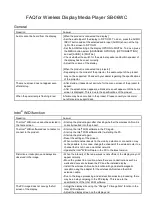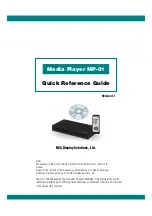
Operating your ATEM Switcher
80
Keying on ATEM Switchers
Keyers are a powerful production tool allowing multiple layers of video and graphics to be stacked on top
of the background. When a new layer of video is stacked on the background, the video or graphic needs to
be cut out so that the background video can be seen. The process of cutting out parts of the layered picture
and revealing the background is called keying. There are various methods that can be used to cut a hole
in the image. The various methods correspond to the different types of keys available on the switcher. The
following section explains luma, linear, chroma, pattern and DVE keys, all of which can be used in both the
upstream and downstream keyers.
Understanding Keying
A key requires two video sources; the fill signal and the key or cut signal. The fill signal contains a video
image which is to be stacked on top of the background, while the key signal is used to select regions of
the fill signal to be removed or cut out. The fill and key signals can be selected from any of the switcher's
external inputs or internal sources, allowing both still and moving images to be used as fill or key sources.
Fill and key signals are selected on the software control panel from drop down lists in the upstream and
downstream key palettes. On the broadcast panel, fill and key signals are selected using the select bus.
There are two types of keyers used in the switcher; upstream keyers and downstream keyers. Four upstream
keyers, also known as effects keyers, are available in the switcher's M/E block. Each upstream keyer can be
set up as a luma, linear, pre-multiplied, chroma, pattern or DVE key. Two downstream keyers are available in
the dedicated DSK block. Each downstream keyer can be set up as a luma or linear key.
The ATEM Production Studio 4K models let you output your key mask via powerful 6G-SDI auxiliary outputs.
It's as simple as pressing the KEY MASK button on the front panel. You can also access your media player
1 and 2 image and key sources by pressing their associated buttons on the front panel. With the key mask
feature you can record your key mask, or alpha channel, in SD, HD or Ultra HD 4K quality via the auxiliary
output. You can also record your green screen video via the program output at the same time. Recording
both sources is useful if you require detailed chroma key post production effects.
















































